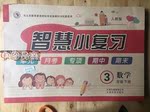题目内容
Though they are of _________ age, they are quite _________ opposite in character.
- A.an; an
- B.an; the
- C.the; an
- D.the;/
B
第一个空用of an age表示同龄人,而后面的opposite可以作形容词,the opposite表示“对应物”。
第一个空用of an age表示同龄人,而后面的opposite可以作形容词,the opposite表示“对应物”。

练习册系列答案
 智慧小复习系列答案
智慧小复习系列答案
相关题目